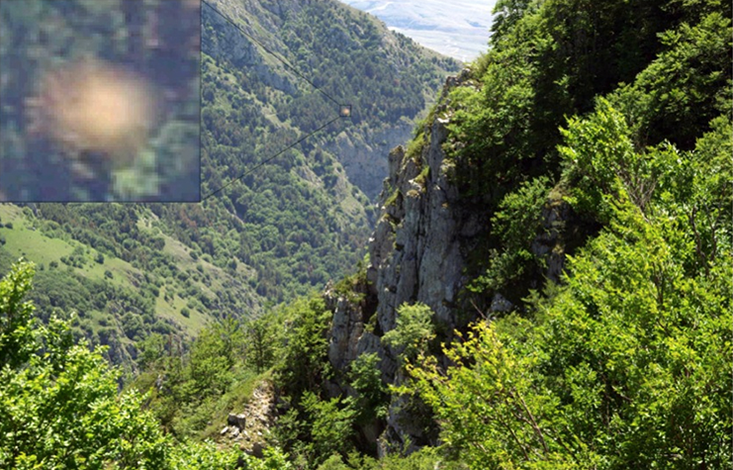An earthquake shook the central Italian city of L’Aquila in the early morning of April 6, 2009. In the months that followed, scientists collected dozens of accounts from people who claimed to have seen “luminous phenomena” both before and after the shock: flashes from the ground, glowing clouds, and floating balls of light that sparked like lightning.
The bizarre episodes were far from unprecedented: Time and again across history, people have reported seeing lights just before earthquakes. These lights have taken many forms: In addition to the balls and flashes seen in L’Aquila, they have been described as luminous, sky-scraping curtains and ankle-high flames, giant spotlights and horizon glows. They had been interpreted as portents of disaster, omens of death and, in the past several decades, as Unidentified Flying Objects.
In studying this phenomenon, scientists first looked up to the sky. They tried to explain it away as atmospheric abnormalities, optical illusions, and even hoaxes. But today scientists suspect that these lights originate beneath our feet. According to NASA senior scientist Friedemann Freund, earthquake lights owe their existence to the electrical currents developed in magmatic rocks as the result of pressure exerted by shifting tectonic plates.
Earthquake lights owe their existence to the electrical currents developed in magmatic rocks as the result of pressure exerted by shifting tectonic plates.
In the early 1980s, Freund was studying what happens when silicon-rich minerals crystallize out of magma at the high pressures and temperatures that are present deep in the Earth’s crust. Freund discovered that in these magmatic rocks, water can combine with silicon atoms to form a new molecular structure, Si-OH. As the magma cools, the hydrogen atoms split off of Si-OH to make a molecule of H2. The remaining atoms then recombine into an O3Si-OO-SiO3 formation, in which the OO link is called a peroxy link.
The movement of earth’s plates exerts “high shear stresses” on the rocks, Freund says. That causes the OO bonds to break, which produces oxygen ions that lack one electron—also known as a “positive hole,” or p-hole. It also results in creation of free electrons, which are negatively charged. When a lot of p-holes and electrons are generated quickly, a charged particle density can be high enough to form a plasma-like state. “When nature stresses rocks very fast, which happens before earthquakes,” Freund says, “90 percent of peroxy bonds activate and suddenly there are lots of p-holes and electrons at the same time, and this is what we call a plasma state.” When this earthquake-generated plasma reaches the Earth’s surface, it can ionize the air and cause bursts of light—which would account for observations of flashes from the ground. That electric discharge may also propagate high up into the air, charging other particles and causing ionizing avalanches responsible for curtain lights and lightening-like flashes in the sky.

When Freund applied several tons of weight to one side of a four-meter rock using a hydraulic press in his lab, he measured an electrical charge on the rock’s other side. “It’s as if I suddenly create a battery,” Freund says. Yet, his p-hole theory is not without controversy. United States Geological Survey geophysicist Malcolm Johnston couldn’t replicate Freund’s experiment in the lab. But Freund argues that Johnston didn’t set up the experiment correctly, and that alternative theories of origins of the electric phenomenon, such as earth’s piezoelectric and triboelectric effects, simply can’t generate enough charge. Boston College seismologist John Ebel says that Earth-crust piezoelectrics can generate charges, but no research suggests that these charges can result in currents. “My sense is that Freund’s onto something,” he says. “We’ll really understand it when we have a lot of people studying it.”
Retired U.S. Geological Survey seismologist John Derr likens the resistance to the p-hole theory to the half-century-long controversy over Alfred Wegener’s radical idea that Earth’s surface floats upon its mantle, drifting apart and coming together across geological time. Like its subject matter, geology is a fissured discipline, not prone to quick transformations, and so coming to a consensus over rock currents will take time. What the p-hole theory is missing is a pivotal piece of real-world evidence, Derr says.
Freund can’t test his theory outside the lab because the necessary experiments would require an impossibly large geochemistry set. But the observational evidence is strong. Together with Derr and several collaborators, Freund analyzed the geology of 65 areas where earthquake lights have been reliably documented since 1600. In a January 2014 Seismological Research Letters paper, Freund and his team stated that almost all earthquake lights sightings occurred near rift areas rich in magmatic rocks, in which the chemistry he uncovered is likely to occur.
In either case, earthquake lights are on their way to a firm scientific grounding, which will lead to a deeper understanding of Earth’s geomagnetic processes and will help seismologists anticipate earthquakes. At the very least, says Derr, “we hope to get the ball rolling, and have earthquake lights better recognized today, so that people will say, ‘I saw something. It was a light running along the ground. And it wasn’t a flying saucer.’ ”
Brandon Keim is a freelance journalist who writes about science, technology, and nature. His work has appeared in Wired, Aeon, Scientific American Mind, and other publications.


























